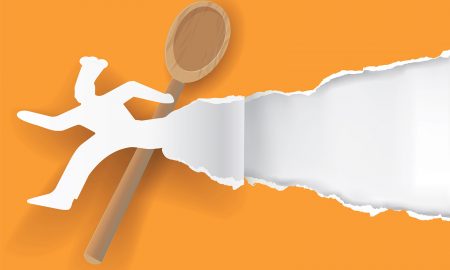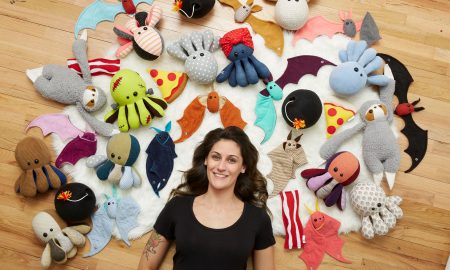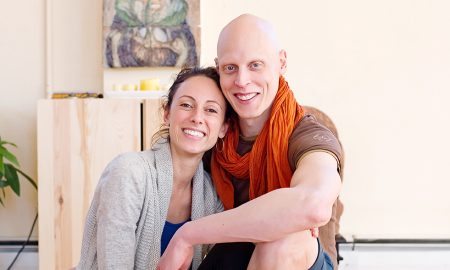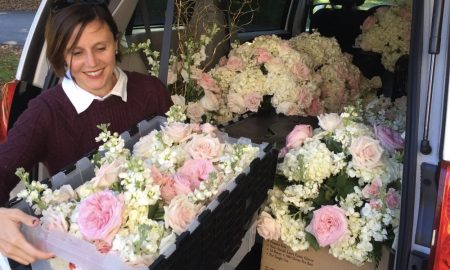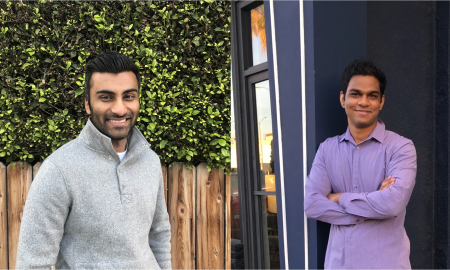

Today we’d like to introduce you to C. A. Stigliano.
Every artist has a unique story. Can you briefly walk us through yours?
I come from a big family with eight children (and not much money) and we weren’t the kind of people who knew a lot (or anything) about stuff like applying for college. I was clueless, but had, and still have, a sufficient amount of dumb luck that has helped me get to where I am. A year after graduating from high school, I was working at a factory that produced electric motors. I had no particular plans beyond that, but I liked to draw, and a girlfriend had an application to the Philadelphia College of Art that she wasn’t using, so I filled it out and was accepted.
I loved the school, there were great teachers and so much more to art than drawing pictures that looked like the things you were drawing—and I met Stephanie Mahan, an outstanding artist then and now. (At first I saw her as the pretty Sophomore with the pink cheeks, later I found out she was the Jeweler who made the amazing unicorn piece in the senior show).
I did sculpture commissions for four years after PCA, a lot of portraits, a few church sculptures, some little things for the Coast Guard and National Park Service (stuff for gift shops mostly, busts of the signers of the Declaration of Independence and Betsy Ross). Whenever I didn’t have work, I would go out to the Franklin Mint, (the porcelain division) where they paid sculptors ten dollars an hour to work on overly cute things. I was making money, but I wasn’t making any sculpture that I liked. Again, however, I had no plans. Somebody offered me a chance to teach and, for the first time in any job, I felt as if I was right where I belonged. Full time teaching jobs were going to people with graduate degrees, so Stephanie and I went off to North Carolina for my MFA. With this degree (and again largely as a result of dumb luck and good timing), I ended up teaching in the Sculpture Department at MassArt.
I have always been very happy teaching, and now I was also making sculpture that meant something to me. I really believe that working with students taught me how to be an artist. I’ve been at MassArt since 1984, and many of the things that have come out of my studio would not have happened without the discussions in the classrooms. Every class I teach adds a new dimension to my work.
Please tell us about your art.
My work has always been about the discoveries I make in life. It seems as if every couple of years I find myself thinking, “Oh, now I understand what life is all about,” and for every one of those revelations (many of them later displaced by new, contradictory revelations), there is a body of work. There are periods when the work is only about me, and then later, it’s about relationships or social issues. I try to be honest, to show what I really believe.
The beliefs that are given to us (forced on us?) by family and culture eventually require some adaptation, or even the total rejection of some aspects. If you are paying any attention at all you learn things, and often the stuff you believed yesterday can’t be reconciled with what you see in the newspaper today. My art is part of a process of discovery and comprehension regarding what it is that I believe. It’s a little (or maybe a lot) like creating my own religion, and it is never quite complete.
Of course, I also want to enjoy myself, and sometimes to make people laugh, and I’m always trying to impress Stephanie. Working in my studio is absorbing and challenging. I like making stuff and sometimes I make things without considering any underlying meaning, just because it’s fun. I’ve been a wood carver for the last 27 years. I work in the basement of my house, Stephanie works in the attic and we meet in the middle. My family, Stephanie, and Angela and Raphael have occasionally been the subject of my sculpture, and have been the biggest influence on my work for the last thirty years or so.
What do you think about conditions for artists today? Has life become easier or harder for artists in recent years? What can cities like ours do to encourage and help art and artists thrive?
I don’t know that it’s ever been easy for artists, unless you ran or worked for a studio that had the backing and blessings of someone in power. In a way, we decide to live outside the prescribed roles, sometimes outside the economy. I don’t think that we should expect it to be easy, and we’re certainly in no position to demand it. We do what others may consider a hobby and usually have to find other work to support it, it’s always a struggle to be in that position. The biggest thing would be for the arts to become recognized as an accepted and necessary part of the culture in every level of education, in our public discourse and funding rather than what it is now, the last item on our social agenda and the first thing to go when money or time gets scarce.
I think that art is as necessary to a society as business and medicine (maybe more). Newspapers should pay as much attention to gallery exhibitions as they do to movies and television shows. Every movie, no matter how inane, gets reviewed, but 90% (I just made that number up but I am willing to wager that it is low) of the art exhibits in this town are ignored. We can do better.
I’ve always believed that my work had political and social implications, it’s actually very difficult to avoid them, but these implications often require time and consideration to find, and not all viewers put in the effort. I think it has lately become necessary to be more overt. Our public discourse has degenerated into open warfare, and I believe that we–all of us–are almost always attacking the wrong people. A lot of my recent work refers to the few people in our society that I think of as “the rich white guys who rule the world” (you know, if you take off their clothes they are not so imposing). I don’t want to make political cartoons, which will no longer be relevant when someone else is in office because these guys can be found on both sides of every argument and the ones we’re focused on today will be gone tomorrow. I try to make work that explores the roots of social issues in human nature or in continuing accepted traditions.
How or where can people see your work? How can people support your work?
I don’t know at the moment where people can see my work. I never bothered with a website, though certainly a lot of my work turns up online. I do this thing where I kind of go into seclusion for a couple of years and create a body of work, then I emerge and find a place to exhibit what I’ve done. The last series I did is no longer in this country because I was lucky enough to sell it.
Right now, I’m just about finished a piece that I’ve been working on for two years that deals with violence against women. When it is complete I’ll find a gallery willing to display it, in the meantime, it is under wraps. I’m not really looking for people to support my work, just take your time and look at it.
Contact Info:
- Email: cstigliano@massart.edu








Image Credit:
C. A. Stigliano
Getting in touch: BostonVoyager is built on recommendations from the community; it’s how we uncover hidden gems, so if you know someone who deserves recognition please let us know here.



